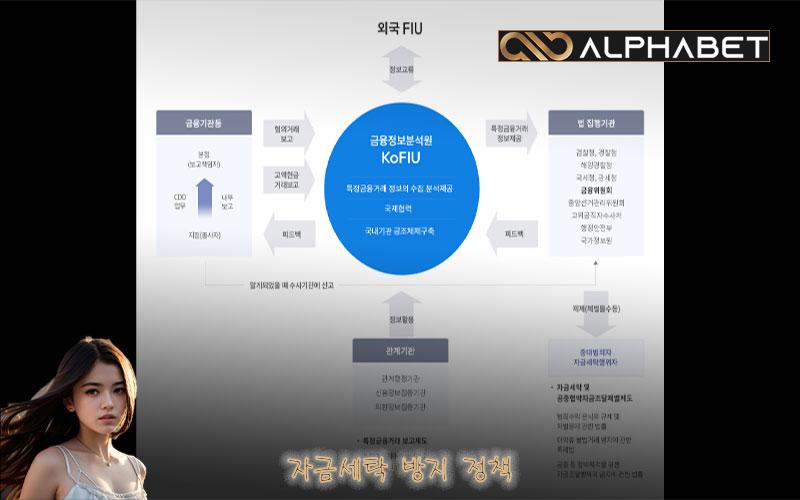Anti-Money Laundering Policy
Anti-money laundering (AML) policy is one of the most important and concerning topics in the banking and finance sector. With the increase in financial fraud and money laundering activities, the adoption of anti-money laundering measures has become a mandatory requirement for financial institutions and banks worldwide. This article online casino will explain the basic knowledge of anti-money laundering, anti-money laundering measures, the scope of anti-money laundering laws, anti-money laundering compliance responsibilities and consequences. Compliance, recent trends in anti-money laundering, the role of technology in anti-money laundering, globalization and anti-money laundering, the future of anti-money laundering.
Fundamentals of Anti-Money Laundering

The basic principles of Anti-Money Laundering include:
Principle of “Know Your Customer” (KYC)
This principle requires financial institutions and banks to have complete information about their customers, including personal information and financial activities. This helps organizations identify whether customers are involved in money laundering activities or not.
“Suspicious Activity Reporting – SAR” principles
This principle requires financial institutions and banks to report transactions suspected of being related to money laundering or illicit assets. These reports will be forwarded to the authorities for investigation and handling.
Anti-Money Laundering Measures
Anti-Money Laundering measures include:
Develop Anti-Money Laundering policies and procedures
This is the first and most important step in applying Anti-Money Laundering. Financial institutions and banks need to develop clear, detailed policies and procedures and fully comply with the provisions of the Anti-Money Laundering Law.
Training Employees
Training employees is an important step to ensure they have adequate knowledge and skills to identify and address money laundering activities. Organizations need to ensure that their staff receive adequate and regular Anti-Money Laundering training.
Use technology
Technology plays an important role in Anti-Money Laundering adoption. Financial institutions and banks need to use information tools and systems to monitor and detect money laundering activities.
Scope of Anti-Money Laundering Law
The Anti-Money Laundering Law is broad in scope and applies to all financial institutions and banks worldwide. Additionally, countries may also have their own Anti-Money Laundering laws, so organizations need to comply with both International Anti-Money Laundering Laws and the laws of the individual countries in which they operate.
Anti-Money Laundering Compliance Responsibilities
The responsibility for Anti-Money Laundering compliance lies with financial institutions and banks. They need to ensure that Anti-Money Laundering measures are fully and effectively applied in their operations. If violated, organizations can be heavily fined and lose reputation in the market.
Consequences of non-compliance with Anti-Money Laundering
Non-compliance with Anti-Money Laundering can have serious consequences for financial institutions and banks. First, they may be heavily fined and lose their reputation in the market. Second, they may be banned from operating or have their business licenses revoked. Finally, they may be investigated and criminally prosecuted for serious violations.
Recent Trends in Anti-Money Laundering
The recent trend in Anti-Money Laundering is the development of new technologies and their application to Anti-Money Laundering. Technologies such as artificial intelligence, blockchain and big data have been used to help financial institutions and banks detect and prevent money laundering activities.
Artificial Intelligence (AI)
Artificial intelligence can be used to analyze and process large amounts of data from financial transactions. It can help organizations find unusual patterns and trends in financial activity, thereby helping to detect money laundering activities.
Blockchain
Blockchain is a new technology used in the finance and banking sector. It allows transactions to be stored and managed in a secure and transparent manner. This helps minimize the risk of money laundering activities and increase transparency in financial transactions.
Big data
Big data is a concept that refers to the collection and analysis of large amounts of data from many different sources. Financial institutions and banks can use big data to detect unusual patterns and trends in financial activities, thereby helping to detect money laundering activities.
The role of technology in Anti-Money Laundering
Technology plays an important role in Anti-Money Laundering adoption. It helps financial institutions and banks process and analyze large amounts of data from financial transactions, thereby helping to detect money laundering activities. In addition, technology also helps increase transparency and reduce risks in financial transactions.
Globalization and Anti-Money Laundering
Globalization has created many business opportunities for financial institutions and banks, but also created many challenges in applying Anti-Money Laundering. With financial transactions taking place globally, detecting and preventing money laundering activities becomes more difficult. Therefore, organizations need to have an effective Anti-Money Laundering system and fully comply with the provisions of the International Anti-Money Laundering Law.
The Future of Anti-Money Laundering
With the development of technology and globalization, the application of Anti-Money Laundering will become even more complex and important. Financial institutions and banks need to continuously update and improve their Anti-Money Laundering knowledge and skills to ensure full compliance with regulations and minimize risks in their operations.
Conclude
An Anti-Money Laundering Policy is a mandatory requirement for financial institutions and banks worldwide. The fundamentals of Anti-Money Laundering include “Know Your Customer” and “Report Large Transactions”. Anti-Money Laundering measures include developing policies and procedures, training employees and using technology. The Anti-Money Laundering Law is broad in scope and applies to all financial institutions and banks worldwide.
Non-compliance with Anti-Money Laundering can have serious consequences for organizations. The recent trend in Anti-Money Laundering is the development of new technologies and their application to Anti-Money Laundering. Globalization has created many challenges in applying Anti-Money Laundering.
The future of Anti-Money Laundering will become even more complex and important with the development of technology and globalization. Therefore, organizations need to continuously update and improve their Anti-Money Laundering knowledge and skills to ensure full compliance with regulations and minimize risks in their operations.
See more >>> ONLINE CASINO TERMS AND CONDITIONS

 한국어
한국어